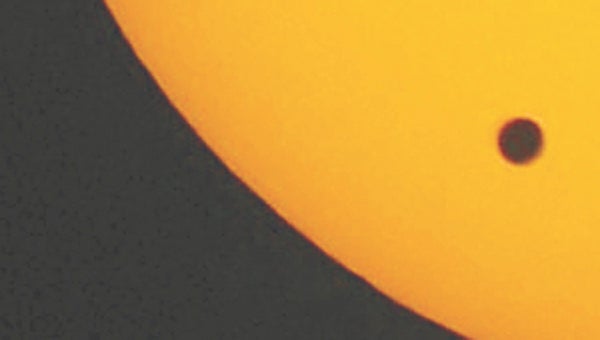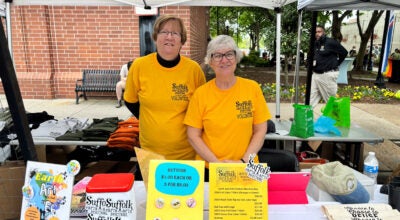A musical journey
Published 10:11 pm Monday, June 4, 2012
A much-anticipated astronomical event will get a musical accompaniment here on Earth on Tuesday.
What’s known as the “Transit of Venus” is set to occur Tuesday evening. The event occurs when the planet Venus passes between the earth and the sun, showing up as a small black dot as its shadow moves across the sun as seen from Earth.
Those in downtown Suffolk during the event will be able to hear John Philip Sousa’s 1883 composition “The Transit of Venus March” from the electronic carillon at Suffolk Christian Church. This version of the composition was recorded by Carmen Halley, pianist at Suffolk Christian Church, and electronically reproduced by the recorded bell sounds of the carillon.
The transit of Venus is analogous to a lunar or solar eclipse, according to Dr. Declan De Paor, director of the Pretlow Planetarium at Old Dominion University. But when Mercury or Venus comes between the earth and the sun, it’s called a transit.
“You’re seeing Venus eclipsing the sun,” he explained. “If you were to look at the sun (Tuesday) evening with proper safety equipment, you’ll see a small black dot going across the sun.”
The last transit of Venus was in 2004, when it was not visible to the United States. De Paor, however, was working in Ireland at the time and was able to view it.
“I’m hoping the weather will be good enough to see a second one tomorrow,” he said. “It’s a very rare occasion for anyone to see two of these.”
Venus transits occur in pairs that are about eight years apart. Each pair is about 105 years apart or 121 years apart. The variation is because of the elliptical shape of the planets’ orbits.
“The rain date for tomorrow’s event is Dec. 11-12, 2117,” De Paor said Monday. “Tell your grandchildren to tell their grandchildren to mark their calendars.”
If you do miss Tuesday’s event, though, take heart — Mercury has a pair of transits set for May 9, 2016 and Nov. 11, 2019.
Those in downtown Suffolk Tuesday evening will be treated to the Sousa composition, as recorded by Halley. The new carillon, which replaces a system that was ruined by lightning last year, has been in operation for a couple months and makes the event possible.
“This was an experience and an experiment,” said Halley, the wife of the Rev. Michael Halley. “With the carillon, you can’t play really more than three notes (at a time) for it to be clear. Otherwise you get a jumble of sounds, so I tried to do just two at a time.”
The composition will play from the church’s carillon at 6:04 p.m., when the transit will begin, and about 8:20 p.m., when the sun sets and the transit is no longer visible.
While no special equipment — just a physical presence near the church — is required to hear “The Transit of Venus March,” those that hope to view the transit need to take special precautions to avoid permanent damage to their eyes, De Paor said. Simply using sunglasses does not offer enough protection.
“The best thing to do is to go to a planetarium,” De Paor said.
To that end, the Pretlow Planetarium is hosting a beach party in Norfolk to view the transit. It will be located at the ODU Sailing Club, W. 46th Street, from 6 to 8:30 p.m. It is free and open to the public. Telescopes with sun-viewing filters will be set up for people to view the transit. If cloudy weather obscures the view, a live webcast from an observatory in Hawaii will be held in the Pretlow Planetarium, which is located in the Oceanography and Physics Building on the ODU campus.
Suffolk Christian Church is located at 216 N. Main St.







